When and how to plant strawberries?
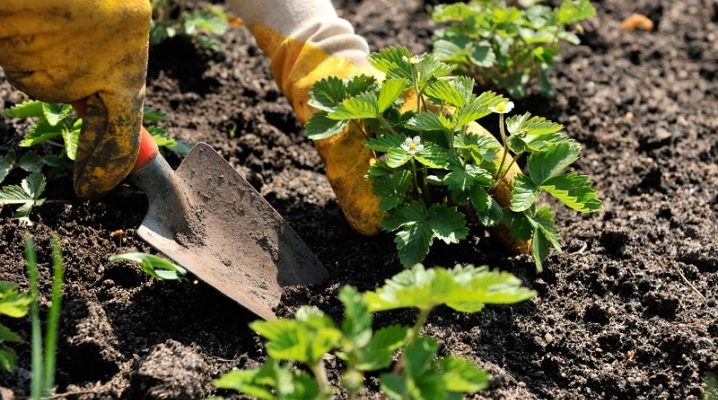
The popularity of strawberries as a berry culture cannot be denied: it can be propagated in different ways (with tendrils or seeds), and planted in different soils, and even at different times of the year, under certain circumstances, of course. But exactly how to plant, what to use for planting, which neighbors to pick for berries, how to care - information for a whole lecture. However, it can be very interesting.
Preparation
Ideally, if a sunny and flat area is selected for the strawberries, which is protected from drafts (their berries are a little afraid). Strawberries like the abundance of light, they love fertile soil, the absence of weeds, and also does not tolerate closely located groundwater.
But in the lowlands, where it is especially cold in the morning, strawberries take root with difficulty - at least the harvest will not be sufficient.
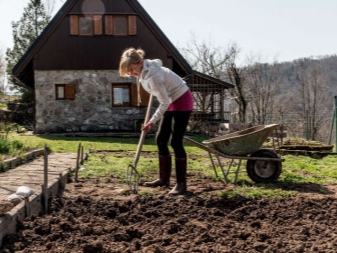
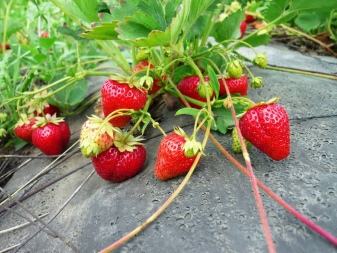
Planting material
Repaired varieties are especially in great demand today, because they bloom throughout the growing season, which means that strawberries do not bloom only in winter. That is, two or even three crops can be harvested from one bush per season / year.
How to choose strawberries for planting:
- well-developed bush with 3-7 leaves;
- bright leaves without damage and bloom, with a smooth surface, without spotting;
- not very high and strong outlet;
- central large kidney;
- the root is light, voluminous - if the root system is dark, the plant is diseased;
- 7 mm (at least) is the diameter of the root collar, and if the root is more than 2 cm in diameter, strawberries will already begin to bear fruit in the year of planting.
If the planting bush has bloomed, the size of the flower should be estimated. A large inflorescence almost always promises a large berry, but seedlings with small flowers (or even without buds at all) are unsuitable for planting. If the summer cottage is new, experts advise choosing not one variety, but at least 3-4 varieties of strawberries. This contributes to cross-pollination, that is, increased yields.
If you want to plan a high harvest, it is better to take seedlings belonging to the elite varieties of the first reproduction. It makes sense to soak the roots before planting, for which water is used with Kornevin, for example. And also there you can add a little crystals of copper sulfate, soak the roots in this for half an hour. Why this is done: with a high probability, after such procedures, the seedlings will take root faster.
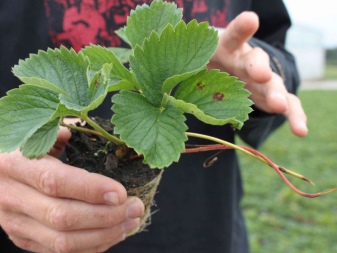
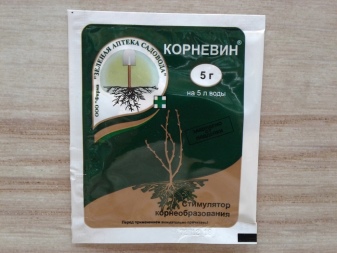
The soil
The selected area, sunny and high, must first of all be cleaned. Remove debris, uproot weeds, stones, leaves, branches, and also remove from this place. You can remove all this manually, or you can treat it with herbicides, or even cover the selected plantation with a dense film. Under the film, the same weeds will die in two or three weeks.
Pests will also have to be dealt with, because insect larvae, fungal spores can turn into serious problems. Tillage in this regard involves the use of ammonia water, you can also use the drug "Roundup" or its equivalent.
To prepare a working solution, you need to stir 100 g of a highly concentrated product in 10 liters of water. There is enough such a solution for 2 acres of land.
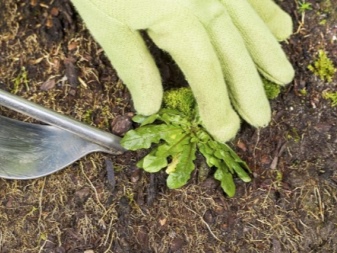
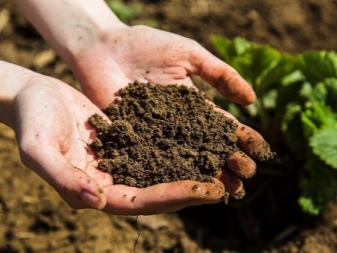
Next to what can you plant?
Neighborhood and compatibility of cultures is extremely important to take into account, because unsuccessful neighbors will interfere with each other, negatively affect one another. Do not plant berries next to tomatoes, eggplants and other nightshades - the main enemies of strawberries, so to speak. Jerusalem artichoke, sunflowers, cabbage and cloves should also not be the berry's neighbors.
What crops are favorable as neighbors for strawberries: carrots, radishes, garlic, onions, spinach, legumes, sage, lettuce, sorrel, parsley. The neighborhood with flowers - tulip, iris, marigolds, clematis, peony, delphinium will also be successful. Legumes have a particularly good effect on strawberries; they loosen the soil remarkably and saturate it with nutrients. And for a kind of soil disinfection, garlic and onions, marigolds, sage are used - they will not let the strawberries get sick.
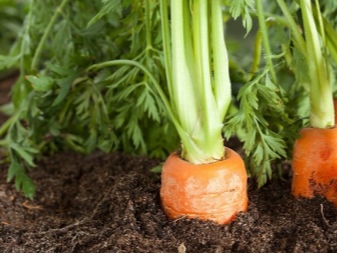

Landing distance
There are many subtleties and dimensions in agricultural technology. For example, it is important not only to maintain a balance of suitable soil, quality variety and general preparation: you need to plant strawberries taking into account the distance between the bushes. It varies from 7 to 60 cm, the gap is large, but that is dictated by the methods of planting. With the carpet method, the spacing will be minimal, with the line method, the maximum. It is also worth saying about the planting depth: the growth point (heart) should be above the ground. Below / above - and the seedlings are already growing poorly, or even dying altogether.
If you have to plant the roots of seedlings with a closed root system, they do not need to be straightened.
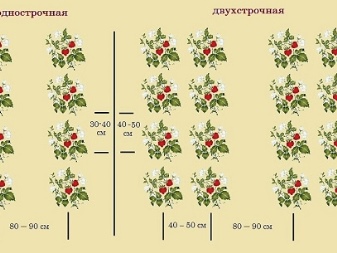
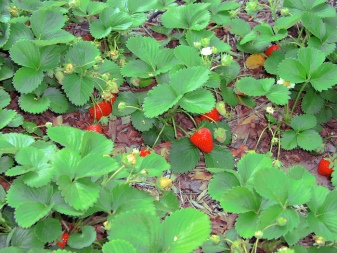
Better ways
And now, step by step about how exactly to plant strawberries or strawberries on the site. Each of these methods gives a good result if you correctly plant and organize follow-up care.
- Trapezoidal beds. The method is good in cases where it is not possible to make a drainage system. We have to manually raise the earthen platforms. The beds are made in 3 rows, with a five-meter interval. Their edges are supposed to be strengthened with branches, which will help later in harvesting. Then the beds are covered with a film with holes made in advance in it, which will provide ventilation.
- Film tunnels. A great solution if the weather in the region is changeable. Above the rows with strawberries, tunnels made of film are placed, which reliably protect the culture from excess sunlight, moisture evaporation, and drafts. But you will have to tinker with them a lot: you will have to monitor indicators such as the level of humidity and the required temperature inside the tunnel.
- Plastic bags. The method is also common for growing garden strawberries. In these bags, a substrate is introduced, which is mixed with fertilizers, it must be regularly and moderately moistened. Holes are made in them in the form of a cross, and the selected seedlings are sent there. A drip irrigation system is supplied to the bags so that the plant receives the necessary nutrition. By the way, the peculiarity of this bed is its mobility, it is very convenient to move it.
- Vertical beds. To implement this option, you will need burlap, a construction grid, a plastic pipe with a rather large diameter, old tires or pots that allow you to conveniently and beautifully build a pyramid. The option is good because in a small area it saves space, strawberries grow compactly, but fruitfully. True, watering such beds is not the most comfortable occupation.
- On a pine cone. In order for the seedling bush to properly position itself in the hole, you need to form a mound from the ground, in which the strawberries with distributed roots are placed. To simplify the procedure (and it is quite laborious), you need to use an ordinary pine cone. It is placed instead of a mound, a couple of fertilizer granules are placed on it, and strawberries are sent to such a "throne". A very cool idea for a good harvest, the only question is to find the required amount of pine cones.
- In tires. This method is also used to create a vertical bed. The height of the building is determined only by the decision of the owner of the site, because the stability of the tires itself is sufficient. They also plant strawberries in boxes and pallets, tires are just a variation.Although the flower beds are different from them, the size and diameter of the tires decides. The upset can then be cylindrical or conical. Tires need to be put on top of each other, fill the soil inside. Tires of different diameters form a pyramid, whiskers are planted around the entire perimeter.
And if the tires are the same, holes are simply made in them for planting seedlings.
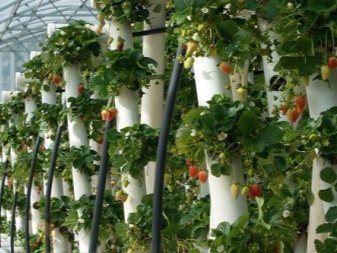
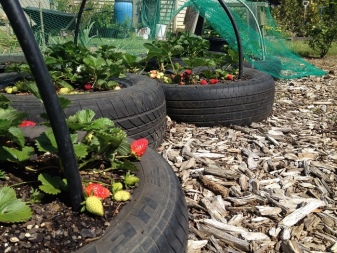
Other
It should be told about not so exotic methods. For example, the bush method is planting berries with bushes at intervals of 50-60 cm, but so that the plants do not intertwine (that is, the antennae will have to be removed regularly). But the method, of course, is very laborious: in addition to the constant removal of antennae, it is also necessary to loosen the soil. But the result is excellent - a large berry, because the conditions for its growth and development are simply "sanatorium".
And you can also plant strawberries in rows, keeping the distance between the bushes at 20 cm, and in the row spacing - 40 cm. The soil will also have to constantly loosen, fight weeds and remember to remove the mustache. That is, the same laboriousness of the process of growing berries will be the main disadvantage of the method, but the main advantage is an excellent harvest. The nesting method is associated with the formation of the so-called strawberry nests. One plant should be planted in the center, 6 more pieces around the circumference, 7-8 centimeters. Yes, a lot of planting material will probably be needed, but the harvest is expected to be large.
The easiest planting method is called carpet planting, because the mustache does not need to be removed from the plant, the culture grows throughout the entire area. Moreover, natural mulch varieties are formed under the bushes. And mulch does not just create a comfortable climate for the development of the plant, it makes a barrier to weeds, that is, it is also necessary that grass does not grow next to the strawberries. These are not all planting methods: strawberries are planted in gutters, in long furrows, in ridges and more. But it is unusual to plant a plant does not mean to guarantee a special harvest, it is often done due to the compactness of the site, for decorative purposes and updating the landscape design of the garden and vegetable garden.
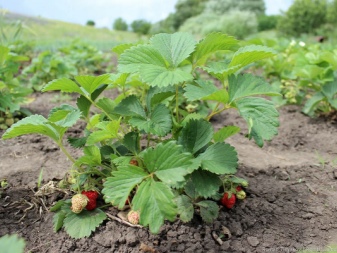
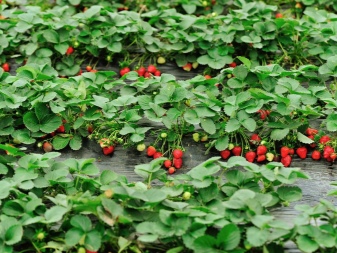
How to properly plant in open ground?
There is a technology for planting seedlings, and there is a technology for planting seeds. The first method is more common and has fewer risks.
Seedling
The rules are simple: about 2 weeks before planting seedlings in open ground, they need to be hardened, accustomed to the conditions in which strawberries are to grow. During the day, this is done for the first time for half an hour, and then the session becomes longer and is repeated several times a day. The day before the strawberries are planted, they are taken to the balcony / veranda, where the air temperature has reached positive 10 degrees. When there is no longer a threat of return frosts, the soil should warm up to at least +12. That is, usually this is mid-May, early June - at this time it is safe to plant the berry. It would be great if she went to the black soil fertilized with ash.
Disembarkation technique:
- prepare the ground - dig up, remove weeds and pests;
- a cloudy day or time after sunset are good for disembarkation;
- with the standard method, the holes are located 35-50 cm from each other, and the row spacing will be 40 cm;
- the soil taken from the holes must be mixed with fertilizers (for example, for 1 bucket of earth, 2 glasses of ash, for a bucket of manure and humus);
- in each hole, a slide is made of soil mixture, where the seedling is installed, its roots are straightened, the soil mixture goes into the hole, water is poured there;
- landmark - after planting, the seedling heart should be at the surface level.
It remains to sprinkle the holes with seedlings in them with earth, mulch using a covering film (fabric, agrofibre). And also mulch made of straw or dry grass will do.
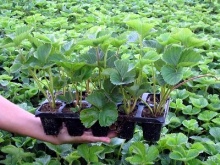
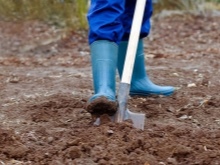

Seeds
This process will probably be more complicated. Usually, the seeds are first laid out on a napkin, soaked in a mixture of succinic acid for at least a month, then stored in the refrigerator. Then a high-quality flower soil is bought, a plastic container is located, half-filled with this soil.
50 seeds are laid out on the surface of the soil, they also need to be watered. The container is covered with a lid, hides for 8 days in a warm place with watering every 3 days. And so - until shoots are noticeable. And then the earth with these seedlings is planted in open ground in the same way as ready-made seedlings.
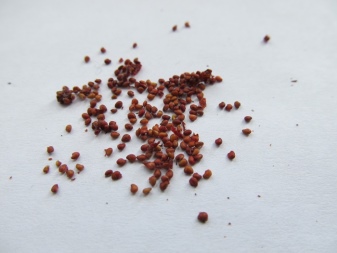
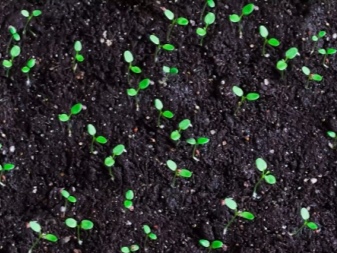
The nuances of planting at different times of the year
Spring planting is good because the plant has enough time to form a developed root system, it freezes less in winter. The soil absorbs melt water well, that is, strawberries will have to be watered less. True, the main disadvantage is significant - you can wait for a high-quality harvest only next year.
But the autumn planting brings the timing of the harvest closer. By the way, it is easier to choose planting material in the fall, from the classic "Victoria" to completely rare varieties. In the soil warmed up in summer, strawberries take root well, because the bushes develop faster. Actually, there is only one risk (it's also a drawback) - the bush may not have time to take root until the first frost.

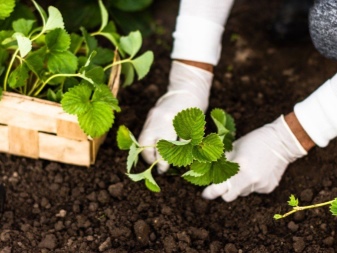
Follow-up care
The peculiarities of caring for the berry are not as scary as beginners sometimes think. Although unpretentious culture can not be called.
A little about watering the berries:
- if it grows on loam, you need to be especially careful with watering - the plant needs a regular and sufficient amount of water;
- it is better to water the strawberries in the morning so that moisture is absorbed into the soil before nightfall;
- while there are no flowers on the plant, it can be watered by sprinkling (drip irrigation is also possible);
- after the seedlings go into the ground, the bush must also be watered and sprinkled with fertilizer (water will be better retained in the soil);
- the first few weeks, watering should be treated with special attention - the plant should take root well, then watering is reduced to once every 3 days.
Excessive watering should also not be, otherwise the plant will be vulnerable to frost, it will often hurt. Fertilizing strawberries, of course, is also necessary. Usually fertilizers are applied to the soil in advance, more often - during autumn digging. During the growing season, the plant needs to be fed three times a day: before the formation of flowers, after fruiting and before preparing for winter. That is, in spring, summer and autumn. But if the soil on the site is depleted, you need to feed it constantly - both with mineral fertilizers and organic matter.
In the spring, strawberries are invariably fed with nitrogen. In autumn, when digging, phosphorus and potassium are introduced into the ground, which has a good effect on the development of the rhizome. By the way, these components are also necessary for the sweetness of the berry.... Mineral fertilizers can be easily replaced with chicken droppings or manure (only they need to be diluted in water and observe all the necessary proportions). When caring for strawberries, one must not forget about using an exclusively disinfected tool, that it is through it that pests often come to strawberry bushes.
It can be difficult for beginners to take care of culture: it makes sense to keep a diary of procedures, to write down what was done and when. By the way, it is quite possible to do this in a smartphone, and at the same time enable the function of reminders of upcoming manipulations.
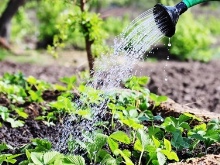
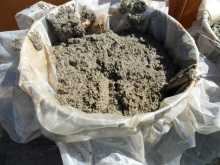

Possible mistakes
Alas, there are a lot of them, and some of them are allowed by new gardeners with their own hands. It is not worth worrying, a lot is fixable, but it is still better to take up theoretical training. This will quickly save you from possible misses.
We grow strawberries correctly.
- This berry belongs to the rapidly aging crops. Bushes should not stay in one place for more than 5 years. It would be nice to plant a new bed annually and clean it up after 5 years. So several bush groups will form in the garden: new plantings, fruiting of the first year (the harvest will be small), productive three-year plots, productive four-year plots and an aging five-year plan, which will then be grubbed and prepared for a vegetable planting.
- Growing the same varieties every year is not entirely productive. The pathogens adapt well to the long-lived variety and attack it more effectively. But there is also a nuance here: no advertising, no experts will guarantee the success of the variety in one area or another. You have to comprehend everything on your own experience, exclusively by experiment and analysis.
- The soil where the new plant will be planted must be "rested" from strawberries for at least four years. And from potatoes, tomatoes and eggplants - at least a couple of years. It is great if the berries are planted in the area where beets and carrots used to grow.
- Strawberry is a plant that gives the maximum yield in the second year of planting.... That is, her fruiting period is very limited, which should be taken into account in advance. Beginners may not even know that the first season will leave them without berries, and even dig up "meaningless" bushes.
- This culture is southern because it loves warm and sunny places. Shade and damp lowlands are the worst thing to choose for a strawberry. The roots of the berry freeze, get wet, injured and poorly cope with their function. And here you can't come up with any adaptations: only a suitable location and the creation of conditions comfortable for the berries. It is naive to believe in shade-tolerant strawberry bushes, especially if sellers of "live" seedlings in the market say so - it's just a marketing ploy.
- During the ripening period of the crop, the lack of watering will also negatively affect the growth of the berries.... Small and lethargic strawberries are often the result of insufficient watering.
- Cooking a garden in a hurry is the same mistake... You need to start preparing a year before planting (or even two), with the obligatory digging, the introduction of a considerable amount of organic matter, with the cultivation of green manure plants.
- And often beginners choose young strawberry bushes with very lush foliage, probably, it seems to them to be synonymous with good health of seedlings.... But this is a wrong move: a bush planted in the ground will begin to take too much nutrition to maintain the leaves, and the young plant will not withstand such a narrow vector. He needs to get stronger, take root, and all the energy goes into the leaves.
- Long roots of strawberries have to be twisted into nests, although many beginners are afraid of this.... They strenuously spread the roots, being afraid to twist them in a spiral. But long root is a long power transfer. Therefore, the length of the roots during planting should not be more than 10 cm; they can be trimmed with clean (disinfected) scissors.
And, of course, you can not plant bushes of different ages interspersed... There will be no impressive results, the plants will interfere with each other. Most likely, they will all start to hurt. This is the price of a delicious, sweet, little comparable berry. Whether it is high is up to the gardener himself to judge.
But the process of growing, no matter how troublesome it may be, is often a pleasure. After all, it is not for nothing that they say that the earth nourishes not only the cultures that grow in it, but also the person who follows all this.
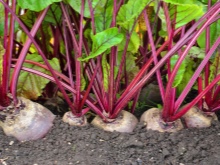

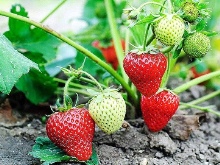













The comment was sent successfully.